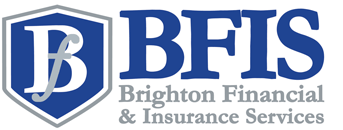1035 Exchange: A Comprehensive Guide
See How We're Different
or call us: 888-412-7630

By: Vernon Williams | Commercial Agency Advisors & Principal
888-412-7630 | vwilliams@thebrightonfinancial.com
In the world of financial planning, one strategy that often comes up is the 1035 exchange. If you've ever wondered what this term means and how it can benefit you, this comprehensive guide will provide you with all the information you need. From understanding the basics to weighing the potential drawbacks and risks, we'll cover it all. So let's dive in!
Understanding the Basics of 1035 Exchange
Before we delve into the mechanics, it's important to grasp the definition and purpose of a 1035 exchange. In simple terms, a 1035 exchange allows you to transfer funds from one life insurance or annuity policy to another without triggering immediate tax consequences. This exchange is named after the relevant section of the Internal Revenue Code.
So why would someone opt for a 1035 exchange? The primary purpose is to facilitate a change in insurance or annuity policies while preserving the tax-deferred status of the accumulated funds. This can be particularly advantageous if you find a policy that better aligns with your current financial goals or if you wish to consolidate multiple policies into one.
Definition and Purpose of 1035 Exchange
In simple terms, a 1035 exchange allows you to transfer funds from one life insurance or annuity policy to another without triggering immediate tax consequences. This exchange is named after the relevant section of the Internal Revenue Code.
When considering the purpose of a 1035 exchange, it's essential to understand the potential benefits it offers. By utilizing this exchange, you can take advantage of the flexibility it provides in adjusting your insurance or annuity policies. This allows you to adapt to changing financial circumstances and ensure that your coverage aligns with your current needs.
Furthermore, the tax-deferred status of the accumulated funds is preserved during the exchange. This means that you can continue to grow your investment without the burden of immediate tax liabilities. This can be a significant advantage, especially if you have built up a substantial amount of funds in your current policy.
The Role of 1035 Exchange in Financial Planning
Financial planning involves making strategic decisions to maximize your wealth and achieve your long-term objectives. A 1035 exchange can play a crucial role in this process by providing an opportunity to enhance your insurance or annuity policies without incurring immediate tax liabilities. By taking advantage of this provision, you can adapt your financial portfolio to better suit your evolving needs.
When incorporating a 1035 exchange into your financial planning, it's important to consider the potential impact on your overall investment strategy. By exploring different policy options, you can identify opportunities for growth and increased benefits. This can be particularly beneficial if you have experienced changes in your financial situation or if you have specific goals you want to achieve.
Additionally, a 1035 exchange can be an effective tool for consolidating multiple policies into one. This simplifies your financial management and allows for better tracking of your investments. By streamlining your policies, you can potentially reduce administrative costs and ensure a more efficient allocation of your resources.
In conclusion, a 1035 exchange offers individuals the opportunity to transfer funds between life insurance or annuity policies without incurring immediate tax consequences. This provision can be advantageous for those seeking to adjust their coverage to better align with their financial goals. By understanding the basics and considering the role of a 1035 exchange in financial planning, you can make informed decisions that contribute to your long-term financial success.
The Mechanics of a 1035 Exchange
Now that we understand the basics, let's explore how a 1035 exchange works in practice. First and foremost, it's essential to know which policies are eligible for such an exchange. Generally, policies within the same category, such as life insurance to life insurance or annuity to annuity, are eligible. However, it's important to consult with a knowledgeable financial advisor or insurance professional to confirm specific eligibility criteria.
Eligible Policies for 1035 Exchange
Policies within the same category, such as life insurance to life insurance or annuity to annuity, are usually eligible for a 1035 exchange. However, specific eligibility criteria may vary, so it's crucial to consult with an expert in the field.
When considering a 1035 exchange, it's important to note that not all policies can be exchanged. For example, term life insurance policies typically do not qualify for a 1035 exchange. Additionally, policies that have already been surrendered or are in the process of being surrendered may not be eligible. It's always best to consult with a financial professional to determine the eligibility of your specific policy.
Furthermore, it's worth mentioning that the IRS imposes certain rules and regulations regarding 1035 exchanges. For instance, the exchange must be made directly between the insurance companies involved, and the funds cannot be received by the policyholder. These rules are in place to ensure that the exchange is properly executed and to prevent any potential tax implications.
The Process of Executing a 1035 Exchange
Executing a 1035 exchange typically involves several steps. Firstly, you must select the new policy you wish to transfer your funds into. This decision should be based on careful consideration of your financial goals and circumstances. It's important to evaluate the features and benefits of the new policy to ensure it aligns with your long-term objectives.
Once you've made your choice, you'll need to notify both the old and new insurance companies to initiate the exchange process. This notification can usually be done through a written request or by completing the necessary forms provided by the insurance companies. It's crucial to provide accurate and detailed information to avoid any delays or complications during the exchange.
After the notification is sent, the insurance companies will then handle the necessary paperwork and coordinate the transfer of funds. This process may involve verifying the policy details, confirming the surrender value of the old policy, and calculating any potential tax implications. The insurance companies will work together to ensure a smooth and seamless transfer of funds from the old policy to the new one.
Throughout the exchange process, it's important to stay informed and maintain open communication with both insurance companies. This will help you stay updated on the progress of the exchange and address any questions or concerns that may arise. Remember, the 1035 exchange is a financial transaction that requires careful attention to detail and adherence to the applicable laws and regulations.
In conclusion, a 1035 exchange offers policyholders the opportunity to transfer funds from one insurance policy to another without incurring immediate tax consequences. It's a valuable tool for individuals who wish to change their insurance coverage or consolidate their policies. However, it's crucial to consult with a financial professional to ensure eligibility and to navigate the exchange process smoothly.
Benefits of a 1035 Exchange
A 1035 exchange offers various advantages that make it a compelling option for policyholders. Let's explore two key benefits: tax advantages and the potential for improved investment performance.
Tax Advantages of 1035 Exchange
One of the most significant advantages of a 1035 exchange is the potential to defer taxes on the accumulated funds. By seamlessly transferring your funds from one policy to another, you can avoid immediate taxation. This can be particularly advantageous if you've accumulated substantial funds within your existing policy and wish to change it without incurring a hefty tax bill.
When considering a 1035 exchange, it's important to understand the tax implications. While you won't be taxed immediately, it's crucial to consult with a tax professional to ensure you fully comprehend the long-term tax consequences. They can help you navigate the complex tax rules and regulations, ensuring you make informed decisions that align with your financial goals.
Furthermore, a 1035 exchange can provide you with the opportunity to reevaluate your overall financial strategy. It allows you to assess your current policy's tax efficiency and explore alternatives that may offer better tax advantages. By taking advantage of a 1035 exchange, you can strategically position yourself for long-term financial success.
Potential for Improved Investment Performance
While tax advantages are enticing, another benefit of a 1035 exchange is the opportunity to enhance investment performance. By moving your funds to a policy with better growth potential or lower fees, you can potentially boost your long-term returns.
When considering a 1035 exchange for improved investment performance, it's important to conduct thorough research and analysis. Take the time to compare different policies, their historical performance, and the associated fees. Consider consulting with a financial advisor who can provide valuable insights and help you make informed investment decisions.
Additionally, a 1035 exchange can open doors to a wider range of investment options. If your current policy limits your investment choices, a 1035 exchange can allow you to explore policies that offer a broader selection of investment vehicles, such as mutual funds, stocks, or bonds. This increased flexibility can provide you with the opportunity to diversify your portfolio and potentially achieve better investment results.
It's important to note that investment performance can never be guaranteed. While a 1035 exchange can offer the potential for improved investment performance, it's crucial to carefully assess the risks and rewards associated with any investment decision. Consider your risk tolerance, investment goals, and time horizon to ensure that the new policy aligns with your overall financial strategy.
Potential Drawbacks and Risks of 1035 Exchange
Like any financial strategy, a 1035 exchange also comes with its fair share of drawbacks and risks. Let's explore a couple of potential concerns: costs and fees associated with the exchange and the possible impact on policy guarantees.
Costs and Fees Associated with 1035 Exchange
When opting for a 1035 exchange, it's important to consider any costs and fees involved. While the specifics vary among insurance companies and policies, there may be surrender charges or administrative fees associated with the exchange. Before proceeding, it's crucial to understand and weigh these costs to ensure that the potential benefits outweigh the expenses.
Possible Impact on Policy Guarantees
Another risk to consider is the potential impact on policy guarantees. When you switch policies through a 1035 exchange, there is a chance that you'll lose certain guarantees or benefits associated with your old policy. Before making any decisions, thoroughly review your existing policy documentation to understand the implications of switching.
Legal and Regulatory Aspects of 1035 Exchange
Understanding the legal and regulatory framework surrounding a 1035 exchange is essential for ensuring compliance and making informed decisions. Let's dive into the two key aspects: IRS rules and regulations and state laws governing the exchange.
IRS Rules and Regulations on 1035 Exchange
The Internal Revenue Service (IRS) has established specific rules and regulations governing 1035 exchanges. These guidelines outline the eligibility criteria, tax implications, and procedural requirements that policyholders must adhere to when executing a 1035 exchange. Familiarize yourself with these rules or seek the guidance of a tax professional to ensure compliance.
State Laws Governing 1035 Exchange
In addition to IRS regulations, state laws may also impact the execution of a 1035 exchange. Different states have their own specific rules regarding insurance policies and transfers. It's crucial to be aware of and abide by these laws to ensure a smooth and legally compliant exchange.
As you can see, a 1035 exchange is a valuable tool in the realm of financial planning. By understanding the basics, mechanics, benefits, drawbacks, and legal aspects, you're equipped with the knowledge necessary for making informed decisions. Remember, consult with professionals in the field to tailor this information to your specific needs and circumstances. Embrace the possibilities that a 1035 exchange offers as you embark on your financial planning journey!
Request A Quote
Get Started Today!
We'll Reply in 15min or less*
Contact Us
*Response time varies based on hours of operation













